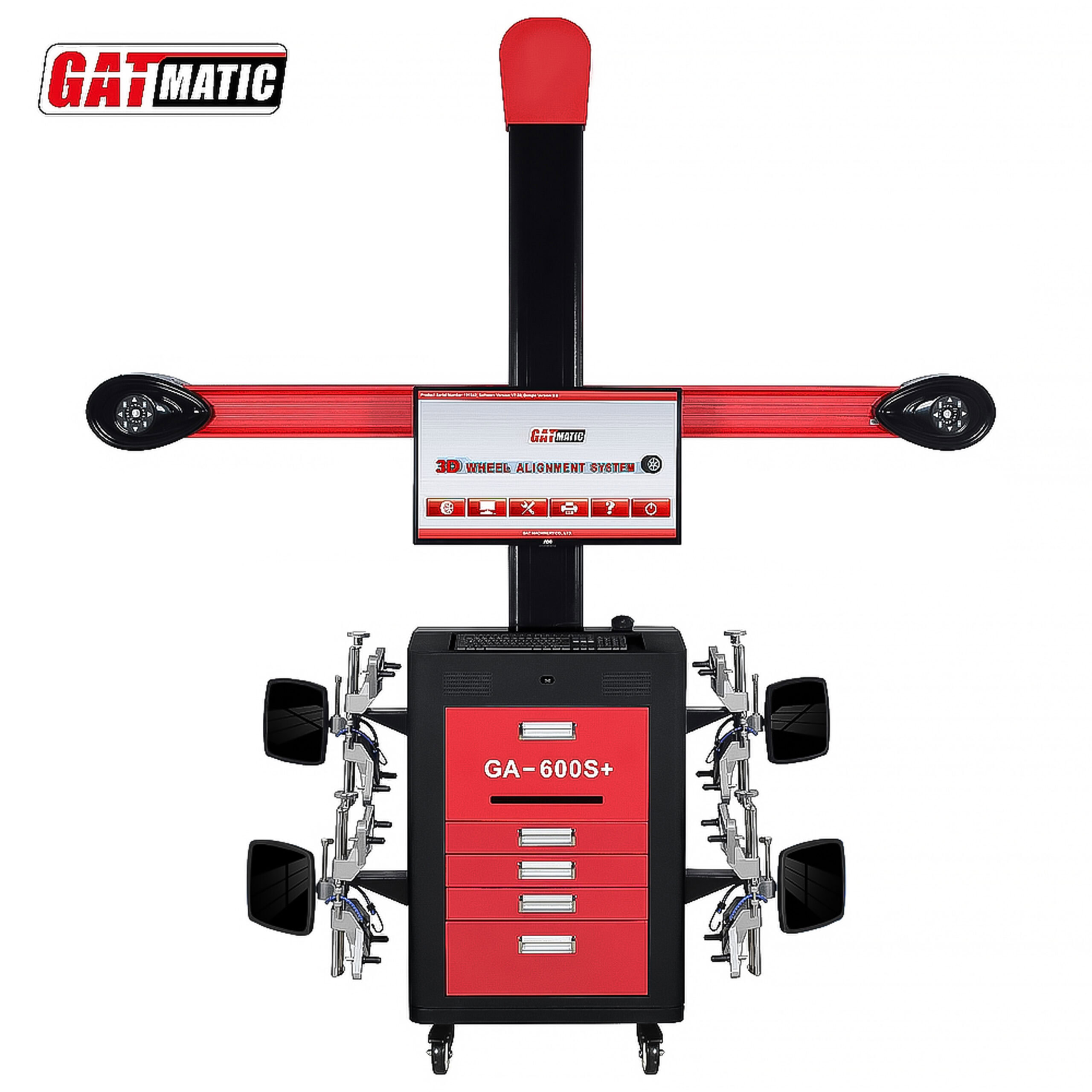What are the common issues faced during the calibration of a four-wheel aligner
I. Introduction
Four-wheel alignment is a critical aspect of vehicle maintenance that ensures all four wheels are positioned correctly relative to each other and the road. Proper alignment enhances vehicle handling, improves tire longevity, and contributes to overall safety. Calibration of a four-wheel aligner is essential for achieving accurate alignment measurements. However, various issues can arise during this calibration process, leading to suboptimal results. Understanding these common issues can help technicians and vehicle owners ensure their alignments are accurate and effective.
II. Common Issues Encountered During Calibration
1. Equipment-Related Issues
One of the primary challenges in calibrating a four-wheel aligner is the condition of the equipment itself. Using outdated or poorly calibrated tools can significantly affect alignment accuracy. It is crucial to utilize equipment that is regularly calibrated against National Institute of Standards and Technology (NIST) traceable standards to ensure precision. If incorrect calibration values are used, the resulting alignment may be inaccurate, leading to further mechanical issues down the line.
2. Environmental Factors
Environmental conditions play a vital role in the calibration process. Temperature variations can affect the performance of both the aligner and the vehicle being serviced. For instance, extreme heat or cold can cause materials to expand or contract, impacting measurements. Therefore, it is essential to replicate the operational environment during calibration to achieve reliable results.
3. Human Error
Human error is another significant factor that can compromise calibration accuracy. Technicians may make mistakes during the alignment process due to lack of experience or inadequate training. Adhering strictly to manufacturer specifications and guidelines is crucial for minimizing errors. Continuous education and training for technicians can help mitigate these risks and improve overall calibration outcomes.
4. Mechanical Issues with the Vehicle
The condition of the vehicle itself can also present challenges during calibration. Worn or damaged suspension components can lead to misalignment, making it difficult to achieve accurate measurements. Additionally, modifications made to a vehicle—such as lifting or lowering—can alter alignment settings and complicate the calibration process. Regular inspections for mechanical issues, such as those caused by collisions or normal wear and tear, are essential for ensuring accurate alignments.
III. Signs Indicating Calibration Issues
Several signs can indicate problems with calibration. A steering wheel that remains off-center after an alignment suggests that further adjustments are needed. Uneven tire wear patterns are another clear indication of misalignment; tires may wear more on one side than the other if they are not aligned properly. Additionally, if a vehicle pulls to one side during driving, it may signal that the wheels are not aligned correctly, necessitating a re-evaluation of the calibration.
IV. Troubleshooting Calibration Problems
1. Rechecking Alignment
If issues are detected after an initial calibration, it is crucial to recheck the alignment settings. This involves verifying that all measurements fall within manufacturer specifications and making necessary adjustments based on observed discrepancies.
2. Inspection of Suspension Components
Regular inspections of suspension components are vital for maintaining alignment accuracy. Technicians should look for signs of wear or damage in parts such as control arms, bushings, and ball joints. Replacing faulty components promptly can prevent further misalignment and ensure accurate calibration.
3. Monitoring Tire Conditions
Maintaining proper tire conditions is also essential for achieving optimal alignment results. Vehicle owners should regularly check tire pressure and ensure tires are rotated according to manufacturer recommendations. Preventing uneven tire wear through regular maintenance helps support accurate alignments over time.
V. Preventive Measures
To avoid common calibration issues, selecting a reputable service provider with certified technicians is paramount. Regular maintenance checks and adherence to manufacturer recommendations will help keep vehicles in good condition and minimize potential alignment problems. Establishing a consistent calibration schedule can also prevent drift in instrument accuracy over time.
VI. Conclusion
In conclusion, proper calibration of a four-wheel aligner is crucial for ensuring vehicle safety and performance. By understanding common issues such as equipment-related problems, environmental factors, human error, and mechanical issues with vehicles, technicians can take proactive steps to mitigate these challenges. Vehicle owners should prioritize regular alignments and address any signs of misalignment promptly to maintain optimal driving conditions and prolong tire life. Through diligence in calibration practices and preventive measures, both technicians and vehicle owners can contribute to safer roads and enhanced vehicle performance.
FAQs
1. What is a four-wheel aligner, and why is calibration important?
A four-wheel aligner is a specialized tool used to measure and adjust the angles of a vehicle’s wheels to ensure they are aligned correctly. Calibration is essential because it ensures the aligner’s measurements are accurate, which directly affects the vehicle’s handling, tire wear, and overall safety.
2. What are the common issues that can arise during the calibration process?
Common issues include:
- Equipment-related problems: Using outdated or improperly calibrated tools can lead to inaccurate measurements.
- Environmental factors: Temperature and humidity can affect the accuracy of measurements.
- Human error: Mistakes made by technicians due to lack of training or oversight can compromise calibration.
- Mechanical issues with the vehicle: Worn suspension components or modifications can lead to misalignment.
3. How often should a four-wheel aligner be calibrated?
It is recommended that a four-wheel aligner be calibrated regularly, typically every three to twelve months, depending on usage and manufacturer guidelines. Regular calibration ensures ongoing accuracy and reliability of the equipment
4. What signs indicate that my vehicle may need an alignment?
Signs of misalignment include:
- A steering wheel that is off-center while driving straight.
- The vehicle pulling to one side.
- Uneven tire wear patterns.
- Instability or a nervous feeling while driving at high speeds
5. Can environmental conditions affect the calibration of a four-wheel aligner?
Yes, environmental conditions such as temperature and humidity can impact calibration accuracy. It is important to perform calibrations in a controlled environment to minimize these effects.
6. What role does human error play in calibration issues?
Human error can significantly affect calibration outcomes. Technicians may overlook critical steps, misinterpret readings, or fail to follow proper procedures, leading to inaccurate alignments. Ongoing training and adherence to manufacturer guidelines are crucial for reducing these errors
7. How do mechanical issues with my vehicle affect alignment?
Worn or damaged suspension components can lead to misalignment, making it difficult for technicians to achieve accurate measurements during calibration. Regular inspections and maintenance of suspension parts are essential for ensuring proper alignment.
Describe Your Needs In Detail!
We will carefully evaluate your needs and give professional solutions.



